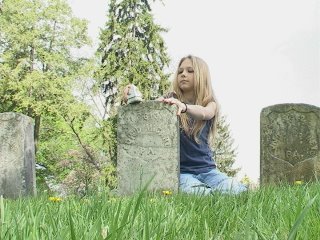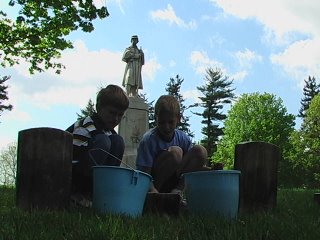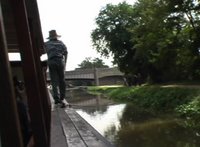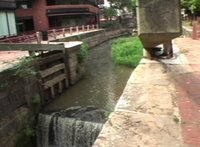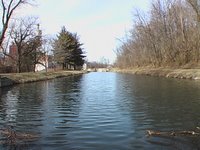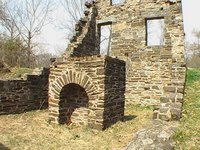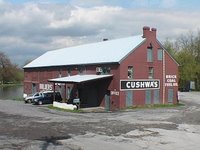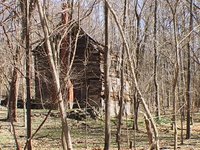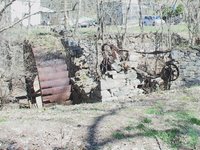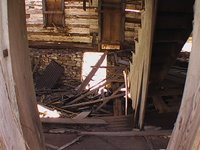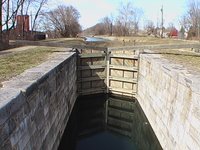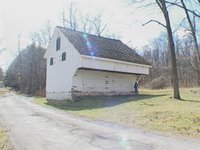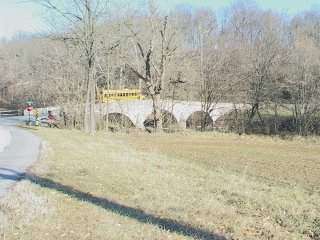This is an article I wrote for the summer'06 "Museums and More" magazine.
That volunteer just may have been the boss!
After a twenty year museum career that included being a volunteer docent as well as the head of a museum education department, I’ve been able to experience the volunteer/ paid staff relationship from both sides of the equation.
Meeting the educational mission at a big Midwestern museum calls for a very large support crew of volunteers. I supervised and trained 75 docents who provided tours and another 100 volunteers in a variety of educational roles, including interpreters in place, costumed living history interpreters, and historic machinery operators.
One of the things I learned early on in my “supervision” (quotes
mine) of this outstanding cadre of retirees included the realization that many of these gifted individuals were once the ”boss” themselves. Principals, department heads, corporate presidents, and other executive types were included in the ranks of my volunteers. I’d often have to remind paid colleagues of this fact when they sometimes too-painstakingly explained the simplest tasks to a volunteer, unaware of the fact that this same volunteer came from a richly varied background of experiences and responsibilities. It can be a humbling experience when, after explaining the basics of making handmade paper to the volunteer who will be helping in the weekend workshop, having that same volunteer tell you she was an engineer at the region’s largest paper mill.
I think that’s the real joy of working with volunteers, as well as the strength of any volunteer-based organization. Such a diverse range of experiences and backgrounds is brought to the mix. More than once I’ve had a retiree discreetly advise me away from a policy decision based upon his or her own experience in a similar situation.
My admiration for, and appreciation of, volunteers in the museum
setting is boundless, and it was my great pleasure to be the trainer and supervisor of so many of them for over a decade.
Recently, my artist wife and I relocated to lovely western
Maryland, and not surprisingly, immediately scoped out the local
museum scene. Hagerstown Maryland (our new home town) has a gem of an art museum that serves the entire Cumberland Valley. The
Washington County Museum of Fine Arts makes extensive use of a very enthusiastic corps of volunteers organized as the Singer Society, so named for the founders of the museum.
The 250 square foot museum store is entirely the responsibility of Singer Society volunteers. Two volunteers, including the 85 year old, Mrs. Lucy Edmunds (charter member of the Singer Society) manage the daily operations of the store, including all of the buying, marketing, product tie-ins, and scheduling. With annual sales over $25,000, Lucy enthusiastically states, “In all modesty, we’re doing a tremendous job!”
Museum Services Coordinator, Donna J. Rastelli concurs and notes that senior volunteers bring additional customer service skills that younger volunteers often may not. “A lot of it has to do with how the older generation was raised”, says Rastelli. “Seniors learned as children how to treat others with respect”, an essential element in the retailer - customer relationship.
In addition to staffing the museum store the Museum utilizes volunteers as greeters, receptionists, docents, and in a variety of other specialized positions. When asked why they are so willing to donate so much time to the success of the museum, Rastelli replies that it’s far more than simply a way to stay busy; “They have a real love for this museum.”
Part-time museum employee Bob Johnson (head of museum security at age 79) added his two cents worth on the value of older volunteers. “Because of their diverse backgrounds and life experiences, seniors bring a lot of expertise with them,” an expertise that often results in happy museum store customers.
If you’re wondering what the museum does to keep their volunteers enthusiastic and engaged, its pretty simple. “They praise us highly, believe me,” Lucy Edmunds says without hesitation. “And when they tell us that we’re worth millions to them, they’re not too far off the mark”.
This is an aspect of senior volunteers that all volunteer managers quickly identify; the dollar value to the institution, represented by the many, many hours that are freely and cheerfully given by volunteers. Without the loyalty, diligence, and public spiritedness of volunteers, one can only imagine how many of our cherished cultural institutions, large and small, would no longer be able to meet their missions.
Now, just as all things old are new again, I find myself back at the beginning - as a volunteer. Four years after leaving the museum setting and relocating to Western Maryland I have again joined the ranks of volunteers. This time at Antietam National Battlefield in Sharpsburg, Maryland.
The Volunteers - in - Parks (VIP) program of the US National Park Service utilizes talented and committed volunteers, of all ages, to provide a wide variety of services at our nation’s national parks.
The Park system includes a range of outstanding museums, historic sites, and natural wonders all staffed by a talented mix of rangers and volunteers, working together, to deliver a broad palette of services to visitors.
The next time you have the opportunity to visit Yellowstone, Big
Bend, or Antietam, the volunteer in the gift shop, the front desk, or out in the fields teaching classes to children, is just one of the 140,000 “Very Important People” who donated in fiscal year 2004 alone, over five million hours to our nation’s pride and joy – the park system.
Three cheers for the Volunteers.


